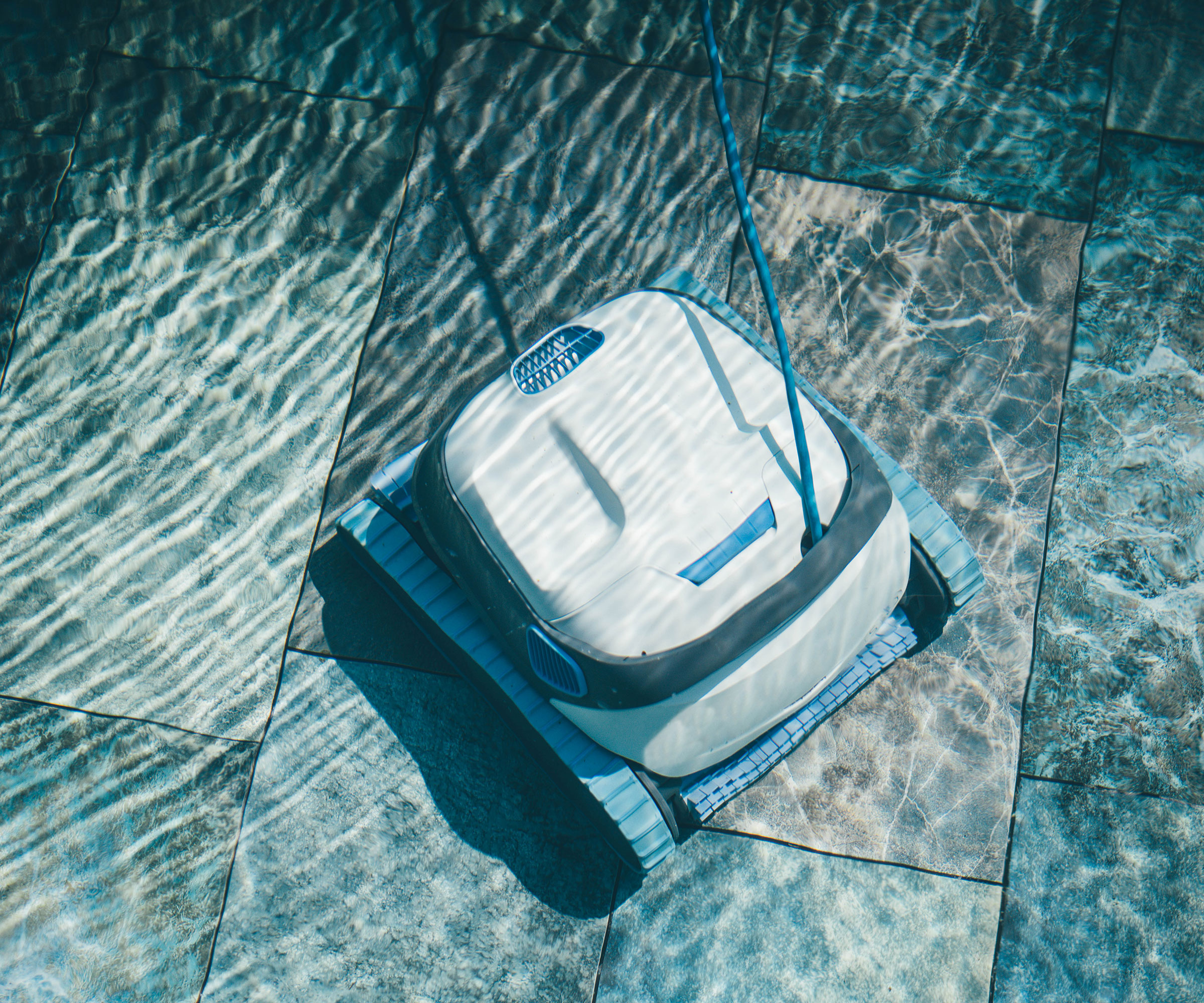
Cleaning up a pool isn't most people's idea of fun, and it can be even worse when your pool vacuum just won't work.
Thankfully, a faulty pool vacuum is usually very easy to fix. I spoke to pool contractors and cleaners about how the professionals fix their pool vacuums, so you can get back to enjoying your pool.
Whether you use a suction, robot, or manual pool vacuum, these are the most common problems to troubleshoot.
1. Check for clogs

The first thing to check is the intake hole. 'Nine times out of ten when there's an issue with your pool vacuum, it's because something is stuck in the filter or hose somewhere,' explains pool expert Rafi Friedman.
This is usually a pretty easy fix – all you have to do is take the vacuum out of the water and pull out the blockage with your hands. Pool expert John Uhle told me to 'look in the intake to see if there is any visible debris that could be causing the clog. Common debris that could get stuck are leaves, branches, or even small toys. Use tweezers, a small hook, or a similar tool to gently remove it. Be careful not to push the clog further and damage the inside of the vacuum cleaner.'
Uhle also advises flushing the water intake opening with a yard hose to help remove the debris. However, it can get a lot more complicated. Friedman says that 'when something gets stuck further up the hose, you can have a serious problem. Getting these items out will require you to disassemble the vacuum and potentially even replace sections of hose.'
2. Check your filters
Another common issue is that your filters are clogged. John Uhle told me that there are three main types of filters: cartridge filters, bag filters, and fine mesh filters. Thankfully, all three have the same easy fix. Uhle recommends that you 'detach the bag or cartridge from the vacuum cleaner, throw all the collected trash into a bin, then rinse it inside and out with a garden hose, dry it in the fresh air, and reattach it to the vacuum cleaner.' You can also watch cartridge filters in soapy water for a deeper clean. Friedman also recommends wiping or spraying off the filter to remove fine particulates. 'This last step is crucial, especially if there aren't any obvious large obstructions.'
If you want to clean a pool on a budget, this simple vacuum will do the job. It takes a little effort, but will save you hundreds of dollars.
If you want the easiest clean possible, you need this robot pool vacuum. It's controlled from an app, and can clean the floor and walls of any pool.
The WYBOT Osprey200 offers automated robotic cleaning on a budget. The only drawback is that it can't clean along walls.
3. Check for air in the hose
It could be that your vacuum has some suction but not enough to remove anything. In this case, it could be that you have air in the hose which is stopping the vacuum pump from getting a good prime.
To solve this, take the vacuum hose out of the water and let all the water drain out. When you next start vacuuming, make sure the entirety of the hose is submerged below the water line. This will ensure there is no air in the hose affecting the suction.
If you're using a hose that plugs into a skimmer, it may be that there is too much debris in the skimmer, or the skimmer attachment is broken. Try plugging your hose directly into the pump, which should give you much better suction.
4. Check for air leaks

The problem could also be an air leak somewhere in the vacuum. Finding a leak can be challenging as it requires inspecting the entire system. Common signs include air bubbles or foam from the pool’s return nozzles. Fluctuating water levels in the pump basket or difficulty priming the pump suggest air in the system. Unusual noises like suction, gurgling, or splashing near the pump area often indicate air leaks, particularly around the pump basket cover or its gasket.
What's the 'shaving foam test'?
If you think you have an air leak, there's an easy way to check. You can cover the vacuum and pool system with soapy foam and run it. If the foam dimples, you can see exactly where the vacuum leaks. You can also use smoke or shaving foam, the so-called 'shaving foam test'. However, John Uhle warns against these tests. 'The smoke test can also be effective, but if you're looking for a crack in windy weather, you'll have to strain your eyes pretty thoroughly to catch the moment when the system sucks that smoke in.' Many experts do not recommend using shaving foam or similar substances. 'Shaving foam is a pretty thick substance, so to see that the system is sucking it in, the crack would have to be decent,' says Uhle.
If you find any cracks, you'll have to buy replacement parts, and it may be the case that you need to completely replace the vacuum.
Pool vacuum FAQs
Can a pool vacuum tear a liner?
A pool vacuum designed for a concrete pool will likely tear the the liner in a vinyl pool. Make sure you have the right type of vacuum for your pool.
For more help with pool cleaning, take a look at how to clean a pool filter and the best way to clean pool tiles







